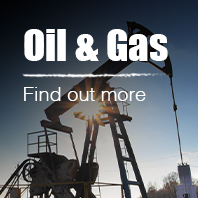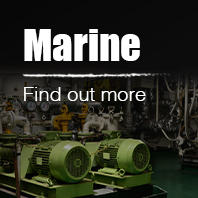Location: ATEX
Equipment Categories Associated with the ATEX Directive
This explanatory page is focusing on the gas side of the ATEX (Explosive Atmospheres) directive as being more relevant to the products which we sell
EQUIPMENT GROUPS
The ATEX directive identifies two GROUPS of equipment
GROUP 1 equipment is intended for use in mining, or underground applications. Divided into categories M1 and M2. M1 identifies equipment that must continue to operate when a potentially explosive atmosphere is present. M2 identifies equipment that does not operate when a potentially explosive atmosphere is present
GROUP 2 equipment is intended for all other above-ground applications. Divided into CATEGORIES 1,2 and 3
EQUIPMENT CATEGORIES
CATEGORY 1 equipment is intended for use in ZONE 0 situations
CATEGORY 2 equipment is intended for use in ZONE 1 situations
CATEGORY 3 equipment is intended for use in ZONE 2 situations
ZONED areas are areas where there is a risk of flammable material being released to atmosphere
ZONES FOR GASES
ZONE 0 is the highest risk zone where an explosive atmosphere is expected to exist continuously or for very long periods of time
ZONE 1 is an area where an explosive atmosphere is expected to exist for short periods of time, but during a year the accumulation of such events is not in excess of 1000 hours
ZONE 2 is an area where an explosive concentration of flammable material is not expected and should it be released it will only exist for a very short period of time and where the accumulation of events over a year does not exceed much in excess of 10 hours
It is mandatory for manufacturers to obtain an EC Type Examination Certificate from a notified body if they are manufacturing electrical equipment in Categories M1, M2, 1 and 2 or diesel engine protection systems in Category 2. In all other cases manufacturers are free to certify their own equipment
EXPLOSIVE ATMOSPHERE
| Gas | G |
| Dust | D |
EUROPEAN STANDARD - Identified as letter 'E' in the Designation
EXPLOSION PROOFNESS - Identified as letters 'Ex'in the Designation, usually found following the above 'E' and thus marked as 'EEx'
RANGE OF APPLICATION
| Fiery Mine Areas | I |
| Other Hazardous Areas | II |
EXPLOSION GROUPING OF GASES
Gases and dusts are classified according to their ignition properties. For Gases and Vapors the EXPLOSION GROUP, (Under Range II above) is called the GAS GROUP, and is determined according to;
- MESG - Maximum experimental safe gap (IEC 60 079-1A)
- MIC - Minimum ignition current ratio relative to methane (IEC 60 079-3)
| GAS GROUP | MESG | MIC |
| IIA | >0.9 mm | >0.8 |
| IIB | 0.5 - 0.9 mm | 0.45 - 0.8 |
| IIC | <0.5 mm | <0.45 |
The danger levels of gases increases from GAS GROUP IIA to IIC
TEMPERATURE CLASSING
Temperature classing is based upon the auto-ignition temperature of a given substance, it is not relevant to flash points as many people think. The temperature class increases as the auto-ignition temperature decreases, from TEMPERATURE CLASS T1 to T6, therefore Temperature Class T6 offers the highest level of protection
| Temperature Class IEC/EN & NEC 505-10 | Max. Sfc. Temp. of Equipment (Celcius) | Auto Ignition Temperature of Substance |
| T1 | 450 | >450 |
| T2 | 300 | >300 to <450 |
| T3 | 200 | >200 to <300 |
| T4 | 135 | >135 to <200 |
| T5 | 100 | >100 to <135 |
| T6 | 85 | >85 to <100 |
EXAMPLES OF SUBSTANCE GROUPING
| GAS GROUP | T1 | T2 | T3 | T4 | T5 | T6 |
| I | Methane | |||||
| IIA | Acetone | Ethanol | Diesel Fuel | Acetyldehyde | ||
| Ethane | Cyclohexane | Aircraft Fuel | ||||
| Petroleum | Butane | Fuel Oil 1,2 & 3 | ||||
| Propane | N-Butyl Alcohol | Kerosene | ||||
| Methanol | Propan-2-ol | Gasoline | ||||
| Toluene | Cumene | Turpentine | ||||
| Benzene | N-Hexane | |||||
| Acetic Acid | Heptane | |||||
| Xylene | ||||||
| Ammonia | ||||||
| IIB | Coal Gas (Town Gas) | Ethylene | Ethylene Glycol | Ethyl Methyl Ether | ||
| Ethylene Oxide | Hydrogen Sulphide | |||||
| Propan-1-ol | Tetrahydrofuran | |||||
| IIC | Hydrogen | Acetylene | Carbon Disulphide |
STANDARDS FOR METHODS OF PROTECTION
The method of protection refers to the standard to which the device has been produced to. There are ELECTRICAL PROTECTION CONCEPTS, and MECHANICAL PROTECTION CONCEPTS
PROTECTION CONCEPTS
| Protection Concept | Permitted Zone of Use in The UK | Code Letter IEC, EX, CENELEC, EEX | Standard IEC/EN |
| General Requirement | - | - | 60079-0 (Electrical) 13463-1 (Mechanical) |
| Control of Ignition Sources | 1 | b | 13463-6 |
| Constructional Safety | 1 | c | 13463-5 |
| Flameproof Enclosure | 1, 2 1 | d | 60079-1 (Electrical) 13463-3 (Mechanical) |
| Increased Safety | 1, 2 | e | 60079-7 (Electrical) |
| Flow Restriction | 2 | fr | 13463-2 (Mechanical) |
| Intrinsic Safety | 0, 1, 2 | ia | 60079-11 (Electrical) |
| Intrinsic Safety | 1, 2 | ib | 60079-11 (Electrical) |
| Liquid Immersion | 1 | k | 13463-8 (Mechanical) |
| Encapsulation | 1, 2 | m | 60079-18 (Electrical) |
| Encapsulation | 0 | ma | 60079-18 |
| Encapsulation | 1 | mb | 60079-18 |
| Non Incendive | 2 | n (used locally in the UK) | 60079-15 (Electrical) |
| Energy Limited | 2 | nL | 60079-15 (Electrical) |
| Non Sparking | 2 | nA | 60079-15 (Electrical) |
| Restricted Breathing | 2 | nR | 60079-15 (Electrical) |
| Enclosed Break | 2 | nC | 60079-15 (Electrical) |
| Pressurisation | 1, 2 1 2 | p p np | 60079-2 (Electrical) 13463-7 (Mechanical) 60079-15 (Electrical) |
| Oil Immersion | 2 | o | 60079-6 (Electrical) |
| Powder Filling | 2 | q | 60079-5 (Electrical) |
| Special | 1, 2 | s |
INGRESS PROTECTION
Hazardous area equipment typically requires a minimum IP rating of IP54, but may be assessed and tested to higher ratings as detailed in the charts below. For full definition of IP Ratings, see IEC/EN 60529
| DUST | |
| IP5x | Dust Protected |
| IP6x | Dust Tight |
| WATER | |
| IPx4 | Splashing Water |
| IPx5 | Water Jets |
| IPx6 | Powered Water Jets |
| IPx7 | Temporary Immersion |
| IPx8 | Continuous Immersion |






